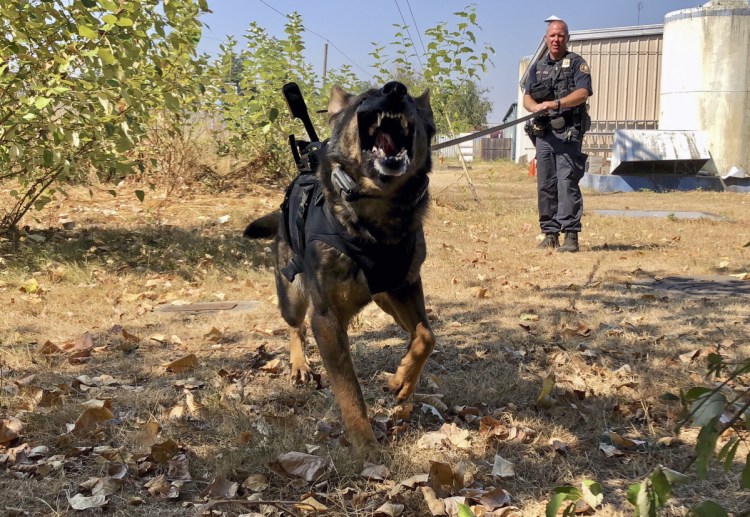MILWAUKEE – Police dogs have always helped their human counterparts through their eyes and nose, and now some of the dogs are getting their own backup – cameras that transmit live video.
The devices generally attach to dogs’ backs on a vest and transmit video to a handler watching from a screen, possibly on their wrist or around their necks. It’s so the officers can better assess what they are up against before they go into a situation.
“If we have a really close encounter with armed people it doesn’t work out well for anyone,” said Shawn Gore, Portland, Oregon, police K-9 officer. “If we can gain distance it gives us lots of options to negotiate and de-escalate.”
David Ferland, executive director for the United States Police Canine Association, a training program for police dogs, said departments generally use the cameras when dogs go out to look for suspects, missing people or explosives – for the dog’s safety and for intelligence gathering.
Ferland doesn’t have statistics but he suspects fewer than 5 percent of agencies have the cameras because they are so expensive. Most cost between $6,000 and $20,000, he said.
But some K-9 academies are already training dogs with vests and cameras so they get used to them, Ferland said.
K-9 cameras started gaining traction about a decade ago after departments saw their success in helping dogs in the military, he said.
Law enforcement agencies generally pay for the cameras through donations or use forfeiture or drug seizure money, which is how Portland is paying for its cameras. That police agency has used 10 cameras on its 10 K-9s since about 2012 and is in the process of getting newer cameras, costing about $20,000 each.
Tactical Electronics started making K-9 cameras in 2006 and has sold 5,000 to 6,000 to law enforcement and military around the world, said Addie Ventris, the company’s marketing director.
In Wisconsin, the Muskego Police Department recently bought its first camera for its dog, Sirius, said K-9 Officer Shawn Diedrich.
“Being able to get a layout of an area – whether it’s out in the woods or in a house or it’s in a business, the camera will start to give us that layout so when officers have to go into that environment they can do it more safely,” Diedrich said.
Send questions/comments to the editors.



Success. Please wait for the page to reload. If the page does not reload within 5 seconds, please refresh the page.
Enter your email and password to access comments.
Hi, to comment on stories you must . This profile is in addition to your subscription and website login.
Already have a commenting profile? .
Invalid username/password.
Please check your email to confirm and complete your registration.
Only subscribers are eligible to post comments. Please subscribe or login first for digital access. Here’s why.
Use the form below to reset your password. When you've submitted your account email, we will send an email with a reset code.